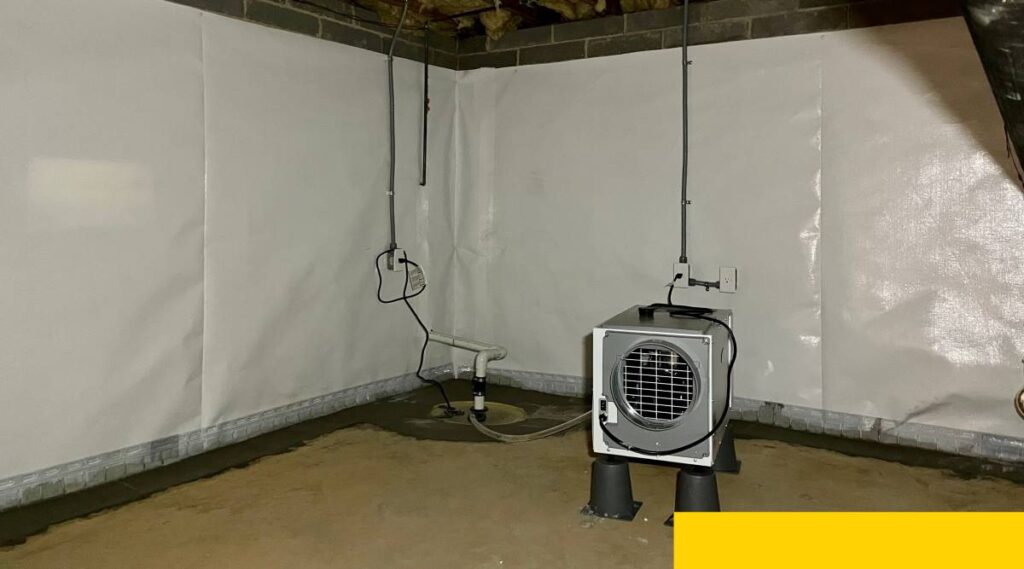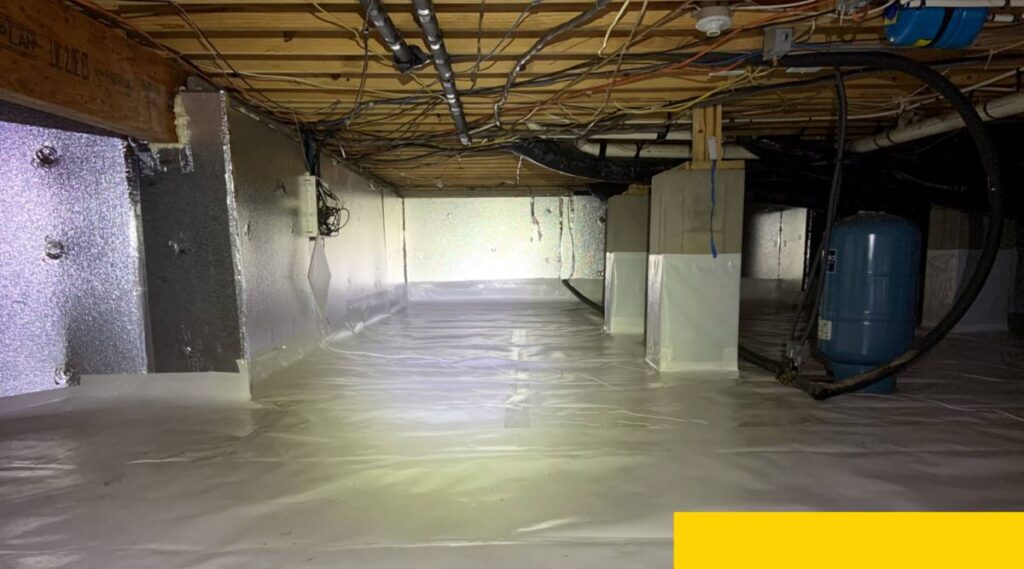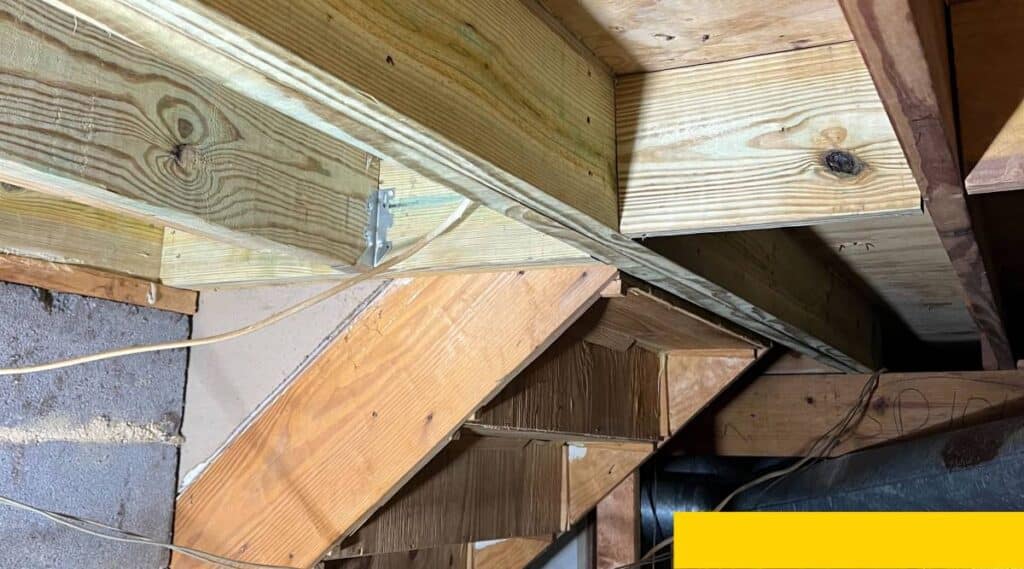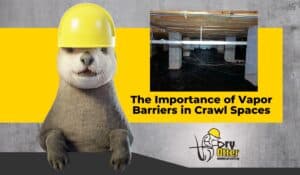
For Truly Local Crawl Space & Basement Waterproofing- You Otter Get Dry!
Serving Charlotte with Truly Local, Right-Fit Solutions for 11 Years.
Preserve your home for decades to come.
Moisture, mold, and foundation issues can not only compromise your health and safety, they can affect the longevity of your home.
Fortunately, the experts at Dry Otter Waterproofing are here to help you protect your investment.
Dry Otter Waterproofing is one of the fastest-growing companies that provide basement & crawl space solutions in North Carolina
What Our Customers Are Saying
EXCELLENTTrustindex verifies that the original source of the review is Google. Adam arrived on time and made some repairs to the original installation in record time and with great precision.Trustindex verifies that the original source of the review is Google. We had our basement water proofed yesterday these guys Will and Josh did a professional job they were very professional and worked very hard considering the heat outside thanks Dry Otter.Trustindex verifies that the original source of the review is Google. Repeat customer! Our second home needed some crawl space TLC. Tyler is detailed and always makes sure we're getting everything we need taken care of and doesn't try to oversell us on stuff we don't need like other companies do. We trust him with our homes and will continue using Tyler and Dry Otter for our services!Trustindex verifies that the original source of the review is Google. Called Dry Otter with water entering crawlspace. Marcus arrived on scheduled date and time to give us estimates. His experience and options allowed us to make the best choice for our situation. We selected Dry Otter even though they were a little more expensive due to the fact of the transferable lifetime warranty. Had a great Dry Otter install team. Big thanks to William, Josh and Luis. There team were knowledgeable and completely professional. Couldn’t be happier with our crawlspace and our Dry Otter team.Trustindex verifies that the original source of the review is Google. William, Josh, Luis were out to encapsulate our crawlspace and did an amazing job. They were professional, timely and knowledgeable. Would recommend them and Dry Otter-Denver NC for your crawlspace needs.Trustindex verifies that the original source of the review is Google. Great service and prices. William Josh and Louis did an Outstanding job. I would definitely recommend using them for your basement needs.Trustindex verifies that the original source of the review is Google. Everyone employed with Dry Otter has been wonderful to work with. Heather was always so sweet over the phone. If she needed to call me right back, she did. Marcus came out when he said he would and he was very kind and so informative. He was patient and willing to take the time to answer all our questions. The crew that came out and completed the job were all kind and did a great job. They are hard working young men. The crew cleaned our basement up before they left and it looks great. Kiddos to the entire staff!Trustindex verifies that the original source of the review is Google. In today's business environment it's so rare to find a reputable company that stands behind their installations. Dry Otter is the real deal! I had a problem with a crawlspace dehumidifier they installed years ago. Dry Otter sent a tech out the same day, diagnosed the problem and ordered the new part . Three days later they came back and installed a new control board, covered under warranty. Their tech Daniel Soto even called the following day to make sure everything was working to my satisfaction.Trustindex verifies that the original source of the review is Google. Very pleased with Curtis, Adam, Devon , and the install crew ( William, Josh , and Luis) of Dry Ottter ! Everything was on the up n up . Answered all questions clearly . Highly recommend this company and install crew for all water issues in unwanted areas of your basement.










Our Services

Basement Repair & Waterproofing
Problems in your basement can have long term damages on the rest of your house.
From waterproofing to foundation issues, we can help repair your basement and avoid costly repairs in the future.

Crawl Space Repair & Waterproofing
Water and moisture buildup in your basement or crawlspace can lead to mold and structural issues.
Our waterproofing solutions can help mitigate these issues, preventing costly repairs down the line.

Foundation Repair
Sagging floors, cracked walls, and stuck windows can be a sign of a bad foundation.
Dry Otter’s basement and crawl space experts use industry-leading techniques to repair your home’s foundation and preserve structural integrity.
Charlotte's #1 Choice for Crawl Space Repair & Basement Waterproofing

Lifetime Warranty
Our basement solutions come with a lifetime warranty so you can have a piece of mind for years to come.

Locally Owned and Operated
As a local business, we understand Charlotte’s unique climate and soil conditions. We have been working with homeowners like you for more than a decade to resolve moisture, mold, and foundation issues.

Premium Solutions
We take pride in our commitment to excellence. We use premium solutions to ensure your crawl space and basement stay dry and protected.
Our top-tier materials and expert craftsmanship guarantee a waterproofing solution that lasts. Trust us for unparalleled quality and peace of mind on every project.
Lifetime Warranty
10+ Years Industry Experience
300+ 5 Star Reviews
Schedule Your Free Inspection
Our process includes the following inspections:
Crawl Space Inspection:
- Moisture and Water Damage
- Mold and Fungus
- Insulation Condition
- Vapor Barrier
- Structural Issues
- High Humidity
- Condensation on Ducts
Basement Inspection:
- Water Intrusion
- Cracks and Wall Leaks
- Foundation Integrity
- Sump Pump Operation
- Mold and Mildew
- Basement Floor Cracks
- Hydrostatic Pressure
Our expert will personally visit your home and examine the issues you are having with your basement or crawl space foundation.
Financing Available
We offer various financing options to make our services affordable to all homeowners.
Ask us about our payment plans today!












